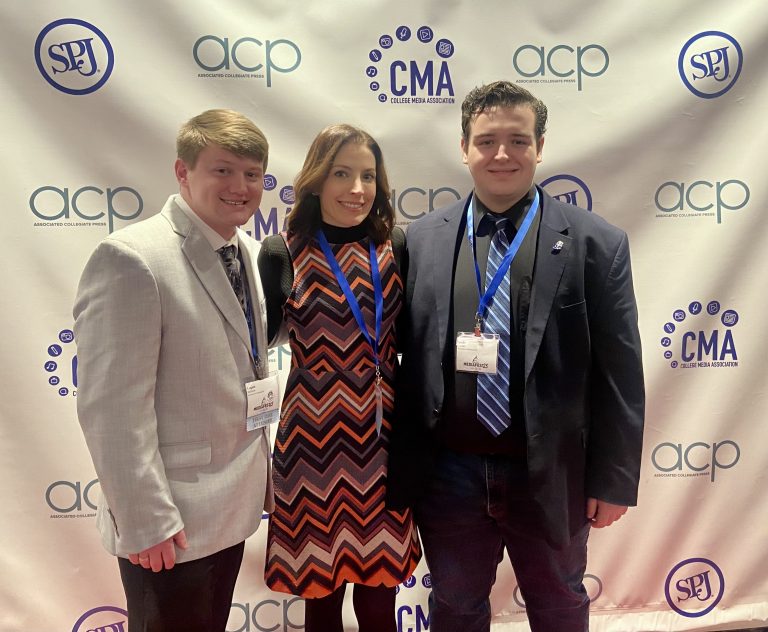The day this article is published will be Ash Wednesday, a Christian holy day of prayer and fasting that marks the beginning of the season of Lent. For those unfamiliar with traditional Christian terminology, Lent is a time intended to prepare for the return of Christ come Easter. As a result, the Lenten season is associated with repentance, fasting and above all, giving up sinful habits.
Huge emphasis is placed on this last sacrificial element. Throughout Lent, many Christians attempt to shed bad habits and inclinations. Above all else, Lent is a time of self-reflection and opening up a dialogue between oneself and God in order to improve as a person. Now is arguably a time to open up a dialogue on a plague that has disrupted the church for decades: the clergy sexual abuse crisis.
A week ago, Pope Francis wrapped up an unprecedented Vatican summit intended to address clergy sex abuse of children. The summit comes after a watershed series of revelations within the Catholic Church, chief among these being an explosive grand jury report from Pennsylvania. According to a Washington Post article titled “More than 300 accused priests listed in Pennsylvania report on Catholic Church sex abuse,” a 1,400-page grand jury report revealed that more than 300 Catholic priests across Pennsylvania had sexually abused children over the span of seven decades, identifying 1,000 victims, but suggesting there could be thousands more. Since the report, Francis has encouraged guilty clergy members to turn themselves over to the authorities, and at the closing mass of the Vatican summit, he made an appeal for an “all-out battle” on clergy sex abuse.
The faith is separate from the corrupted hierarchy of the church.
The nation has undoubtedly felt the effects of the clerical sexual abuse crisis. According to USA Today, five major leaders in the Catholic church were taken down by the crisis, including the pope’s top financial adviser, an archbishop and a cardinal.
No slot within the Catholic hierarchy is safe from the crisis—not even here. An IndyStar article titled “Archdiocese of Indianapolis names priests accused of sex abuse” reported in October of 2018 that the Archdiocese of Indianapolis had released the names of more than 20 priests with at least one claim of sex abuse of a child or adolescent against them.
Amidst this crisis, nearly forgotten, are the faithful young. Another article from The Washington Post titled “What it’s like to be a young Catholic in a new era of clergy sexual abuse scandals” notes that this generation of Catholic and Christian young people tragically may not remember a pre-scandal church—and they’re right. After all, the clergy sexual abuse crisis was fully exposed by the Boston Globe in 2002, when most young adult Christians were just children—and now, 17 years later, it is still a hot button topic.
Many of the faithful young are disillusioned, even heartbroken. The previously-mentioned Washington Post article notes that for young people, the knowledge that a priest they have developed a relationship with could potentially be a predator is devastating.
A good portion of students here at the University of Indianapolis identify as Christian or Catholic. That percentage increases when expanded to the entirety of Indiana. The population of just the Archdiocese of Indianapolis alone is upwards of 3 million people, according to the Archdiocese of Indianapolis, and seemingly on every street corner is a different Catholic institution. Less than ten minutes from this university are more than ten Catholic churches in all directions. We are encompassed on all fronts by the faith. And it is difficult to admit precisely how much this crisis has impacted how Christians perceive the church and its hierarchy.
After decades of intense cover-up, the clerical hierarchy will never be viewed the same again. Thanks to these scandals, there may always be an underlying sense of skepticism and dread when interacting with the clergy. As priests are vessels meant to emulate Christ and his teachings, this revelation is as heartbreaking as it is eye-opening.
While I myself no longer subscribe to a religious affiliation, I know the church. I grew up in it. I was an altar girl, a Eucharistic minister. I led Children’s Liturgy of the Word and rewrote my parish’s Christmas pageant to make it more interesting for the kids. Above all these things, however, I worked as a youth minister. And I’ve seen the deep, profound impact this crisis has had on the young faithful. I fielded questions like, “Is this who we are?” “What can we believe?” “What can we do?”
So for those suffering from the repercussions of the clerical sexual abuse crisis, the truth is that certain aspects of the system are corrupt. Priests all the way up to cardinals have lied about, enabled and exacerbated the sexual abuse crisis for decades.
But to the young, disillusioned Christian reading this: they are not the faith. You, who rightfully are angered by this, as Christ would be, are the faith. The faith is separate from the corrupted hierarchy of the church.
That being said, the faithful young must hold the faithful old accountable. In 2002, when the Boston Globe story broke, church elders desperately attempted to keep the story covered up, and paid millions of dollars to do so. But there is no longer room for that in the modern church. And there never was.
The Lenten season has begun, and with it the annual Christian purge of sinful energy and negative thought. Now is a time to improve and grow as a church community, to begin the process of separating the realities of a well-intentioned, good-natured faith from the harmful shadows cast upon it by its corrupted leaders. Now is a jumping off point for the future of the faith. Now is a time of renewal—and it starts with the young church.






